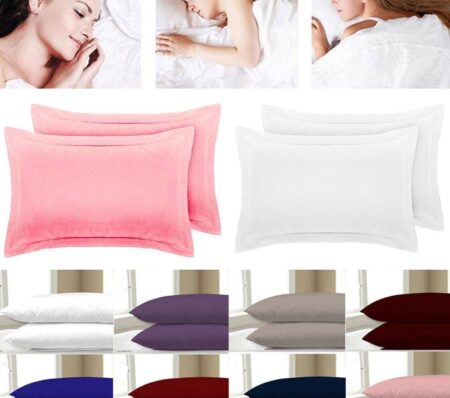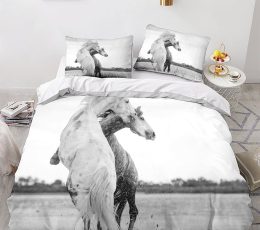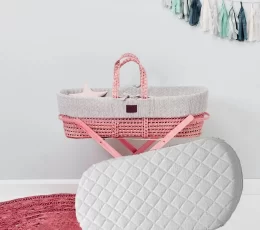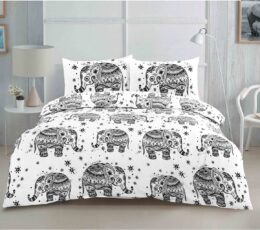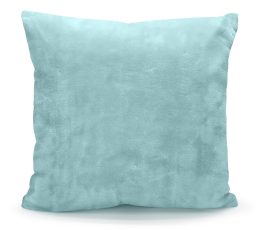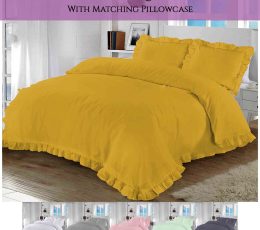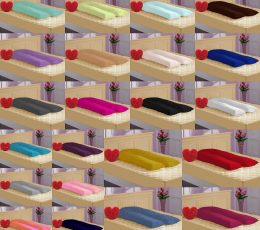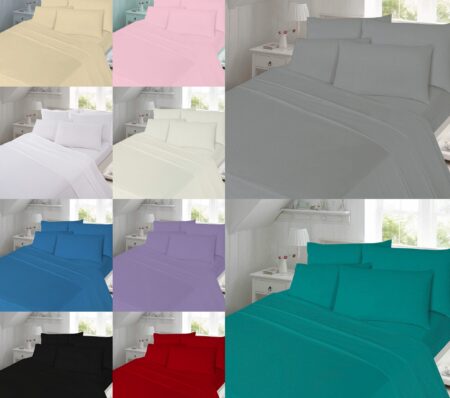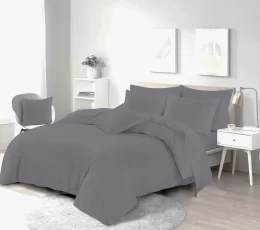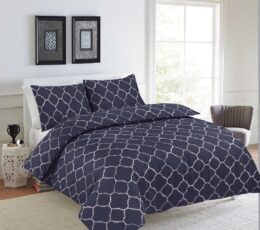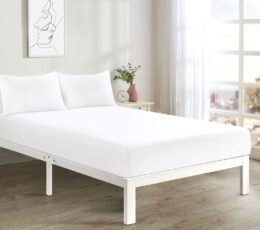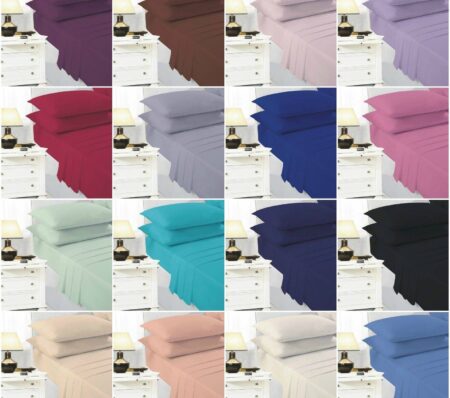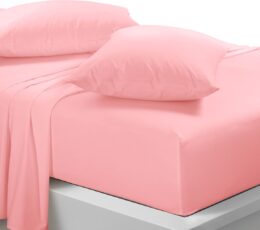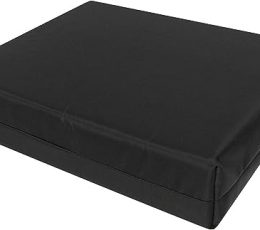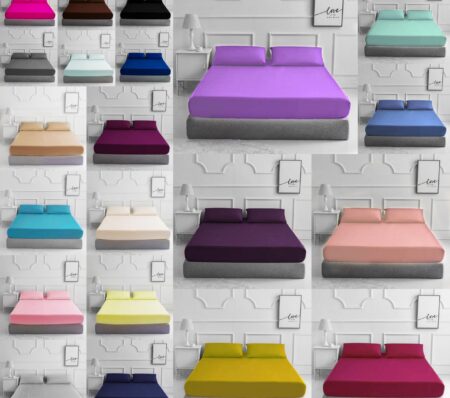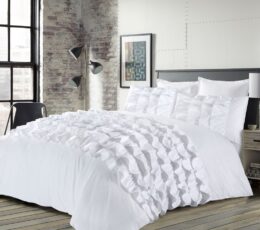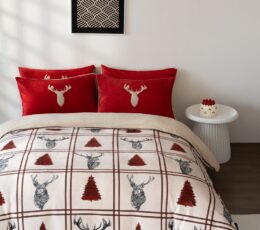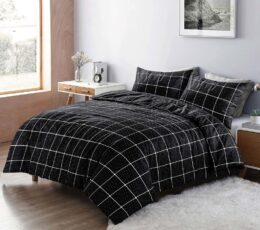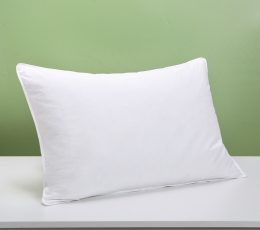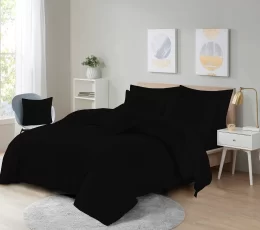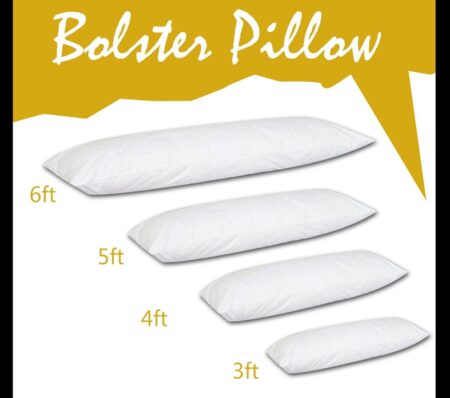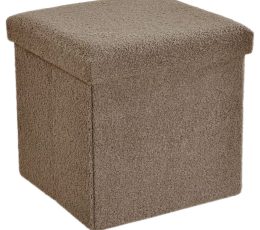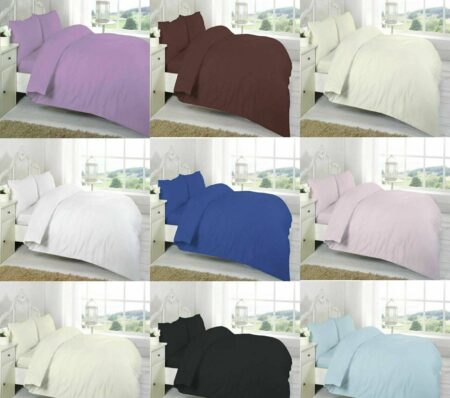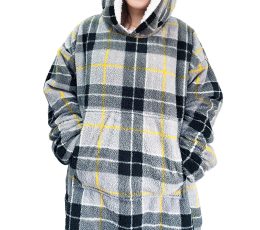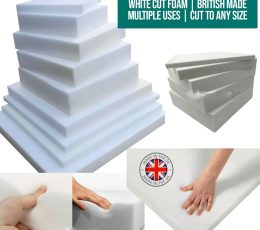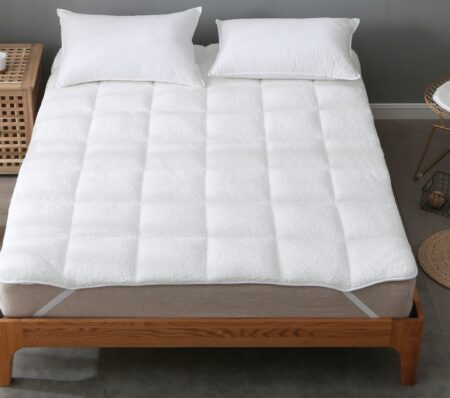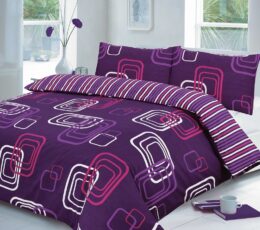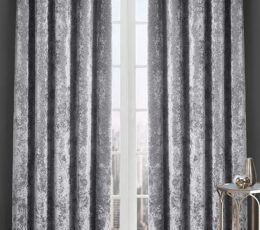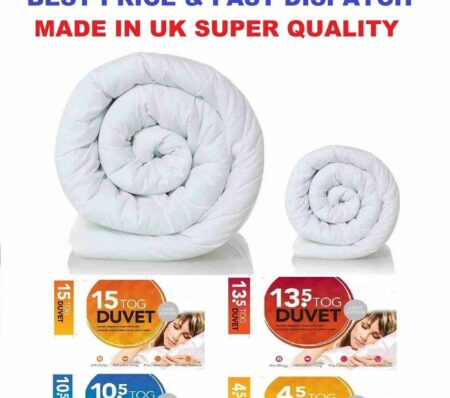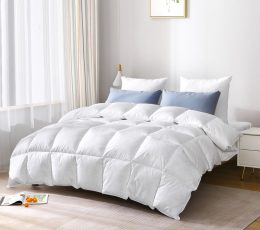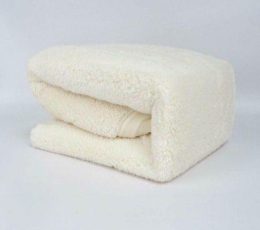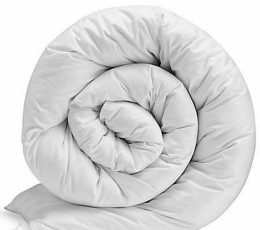We all enjoy getting new things as they bring the joy that we get, like experiences like trying new places to visit. The bedding is also one of the many things that bring new joy to our daily lives. Just for your knowledge bedding is one of the busiest businesses in the world. It is important to understand How Much Should I Spend on a Duvet.
Creating a comfortable and inviting sleep space often begins with choosing the right all season duvet. However, determining how much to invest in this essential bedding item can be a nuanced decision. In this comprehensive guide, we will explore the factors to consider when buying a duvet, provide insights into how much you should spend, and discuss the frequency of duvet replacement to ensure a restful and hygienic sleep environment.

What Should I Look for When Buying a Duvet?
Before delving into the financial aspect, it’s crucial to understand the key factors to consider when purchasing a duvet:
- Tog Rating: Consider the tog rating, which measures the duvet’s thermal insulation. Choose a tog rating that aligns with your climate, ensuring you stay comfortable throughout the year. It’s important to understand the duvet tog guide.
- Fill Material: Duvets come in various fill materials, including down, feather, synthetic fibers, or a combination. Each material has unique characteristics, influencing factors such as warmth, weight, and hypoallergenic properties.
- Quality of Cover: Assess the quality of the single duvet cover. A high thread count contributes to the softness and durability of the fabric. Additionally, a tightly woven cover prevents the filling from poking through. You need to understand how to choose duvet cover.
- Size and Fit: Ensure the duvet size corresponds to your bed size for optimal coverage. A well-fitted duvet enhances both comfort and aesthetics.
- Construction: Consider the construction of the duvet, including features such as baffle boxes or quilting patterns. These affect the distribution of the filling and prevent it from shifting, maintaining an even warmth.
How Much Should I Spend on a Duvet?
Determining the appropriate budget for a duvet involves balancing your preferences, needs, and available options. Here are some considerations:
- Quality Materials: High-quality materials, such as premium down or advanced synthetic fibers, often come at a higher cost. Investing in quality coverless duvet ensures durability, optimal insulation, and long-lasting comfort.
- Brand Reputation: Established brands with a reputation for producing quality bedding may have higher price points. Researching customer reviews and brand reputation can guide you in making an informed decision.
- Tog Rating and Versatility: Duvets with versatile tog ratings suitable for all seasons might command a higher price due to their adaptability. Consider this when assessing the cost relative to the year-round comfort they provide.
- Special Features: Some duvets come with special features like hypoallergenic treatments, moisture-wicking properties, or additional breathability. These features can influence the cost but may offer added value based on your specific needs.
- Budget Considerations: While it’s tempting to seek the most affordable option, consider your duvet purchase as a long-term investment in quality sleep. Finding a balance between budget constraints and essential features is key.
Ultimately, the price of a duvet can vary widely, ranging from affordable options to luxury bedding with higher price tags. Assess your priorities and choose a duvet that aligns with your preferences and budget constraints.

How Often Should You Replace Your Duvet?
Even the most well-crafted duvets have a lifespan, and knowing when to replace them is essential for hygiene and comfort. Here are some guidelines:
- Every 5-10 Years: On average, plan to replace your duvet every 5 to 10 years. Over time, the filling can lose its loft, and the fabric may show signs of wear, impacting the duvet’s effectiveness and overall comfort.
- Visible Wear and Tear: If you notice visible wear, tears, or an uneven distribution of filling, it’s a clear sign that your duvet is due for replacement. Damaged duvets may compromise their ability to provide adequate insulation.
- Hygiene Concerns: Regularly washing your duvet cover helps maintain cleanliness, but the duvet itself may accumulate allergens and dust mites over time. If you have concerns about hygiene, consider replacing your duvet more frequently.
- Changing Needs: Lifestyle changes, such as moving to a different climate or altering your preferences for warmth, might necessitate a change in duvet type or tog rating.
Signs You Need a New Duvet
Your duvet is a key player in creating a comfortable sleep environment, but like any bedding item, it has a lifespan. Recognizing when it’s time to replace your duvet is crucial for maintaining optimal comfort and hygiene. Here are the signs that indicate you might need a new duvet:
- Loss of Loft: Over time, the filling in your 15 Tog duvet can lose its loft, resulting in a flatter appearance. If your once-plush duvet now seems deflated and fails to provide adequate insulation, it’s a clear sign that it’s time for a replacement.
- Uneven Distribution: A well-constructed duvet should evenly distribute its filling to maintain consistent warmth. If you notice clumps or uneven distribution, it suggests wear and tear that can impact the duvet’s overall effectiveness.
- Visible Wear and Tear: Tears, holes, or frayed edges are unmistakable signs that your duvet is reaching the end of its useful life. These issues not only compromise the aesthetic appeal but also diminish the duvet’s ability to provide adequate insulation.
- Allergies or Respiratory Issues: If you or your sleeping partner experience increased allergies or respiratory issues despite maintaining a clean sleep environment, it could be a result of allergens accumulating in the duvet. Replacing the duvet might be beneficial for health reasons.
- Odors That Persist: Even with regular washing, if your 4.5 Tog duvet retains persistent odors that don’t dissipate, it may indicate that the filling has absorbed moisture or other elements over time. This can compromise both comfort and hygiene.
- Changing Sleep Preferences: As personal preferences for warmth levels change or if you find yourself frequently adjusting the thermostat to compensate for an insufficiently warm duvet, consider a duvet with a different tog rating.
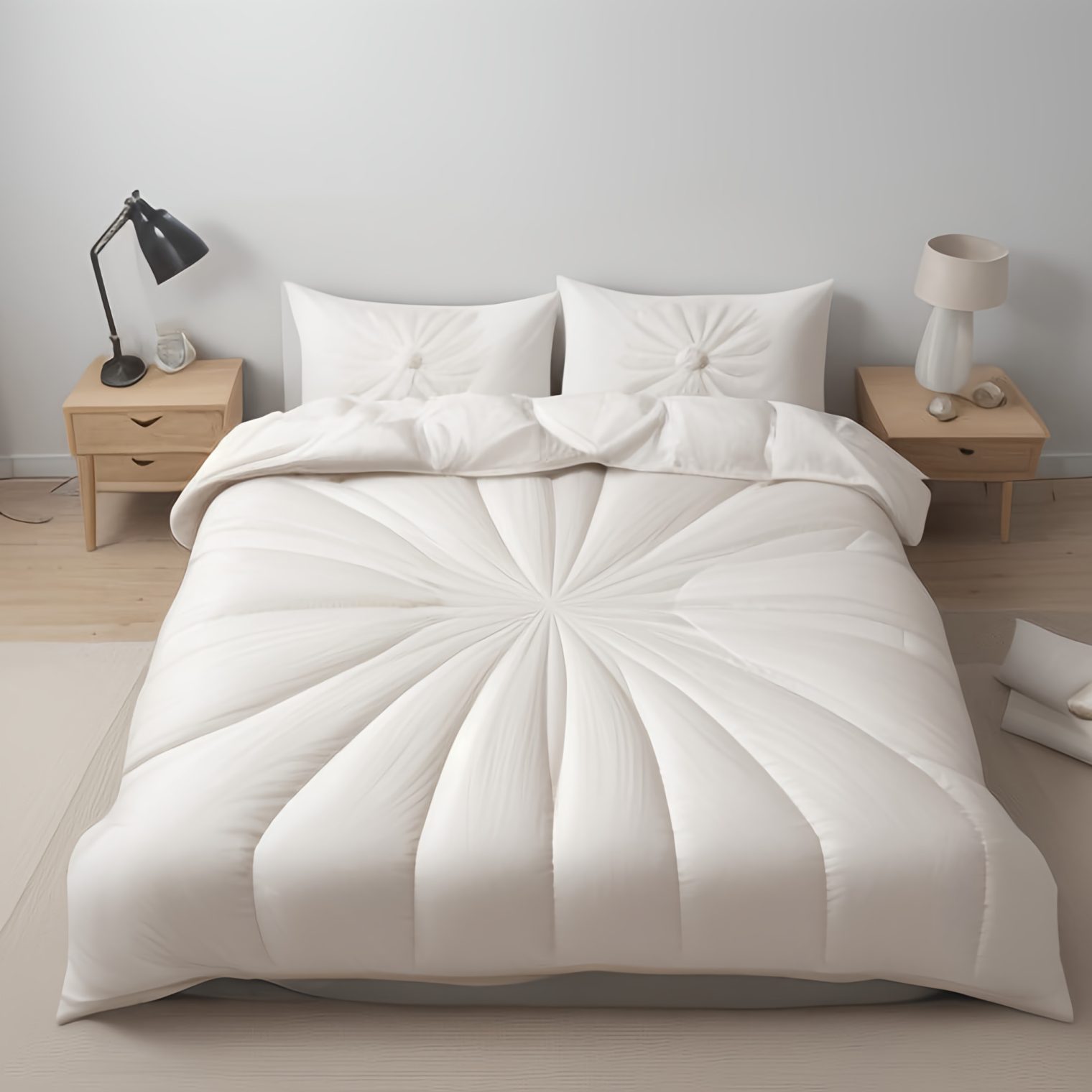
How Often Should Duvet Covers Be Changed?
While the duvet itself may not require frequent washing, duvet covers should be changed regularly for both hygiene and aesthetic reasons. Here’s a general guide:
- Weekly to Bi-weekly: Ideally, duvet covers should be changed every one to two weeks. This frequency helps maintain a clean sleep environment by preventing the accumulation of sweat, skin cells, and other debris.
- More Frequently if Necessary: If you sweat heavily at night or if you’ve been unwell, consider changing your duvet cover more frequently to ensure a fresh and hygienic bedding surface.
- Seasonal Changes: Consider changing duvet covers seasonally or whenever you rotate your bedding. This not only adds a refreshing touch to your bedroom decor but also allows you to choose materials and colors appropriate for the season.
How Do I Keep My Duvet Clean In Between Washes?
Maintaining a clean duvet between washes contributes to its longevity and your overall sleep hygiene. Here are some tips to keep your duvet fresh:
- Use a Duvet Cover: A duvet cover acts as a protective barrier, preventing direct contact between your body and the duvet. It’s easier to wash and change a duvet cover regularly than the entire duvet.
- Rotate Your Duvet: Periodically rotate and flip your duvet to ensure even wear and reduce the likelihood of localized wear spots. This simple practice helps maintain the duvet’s loft and overall effectiveness.
- Air It Out: On a sunny day, open your windows and let your duvet air out. Exposure to fresh air helps eliminate odors and keeps the duvet feeling fresh.
- Use Pillow Protectors: If you use your 13.5 Tog duvet for extra pillow support, consider using pillow protectors. These covers are easily washable and can prevent oils, sweat, and allergens from reaching your duvet.
- Regular Vacuuming: If your duvet is lightweight and easy to handle, consider vacuuming it using a handheld vacuum or a vacuum cleaner with a brush attachment. This helps remove surface debris and keeps the duvet fresh between washes.
FAQs
Q1: What is a good price for a duvet?
The price of a duvet can vary based on factors such as size, fill material, and brand. Generally, good-quality duvets can range from $50 to $300 or more. It’s essential to balance your budget with the desired features and materials.
Q2: Is it worth spending money on bedding?
Yes, investing in quality bedding, including a duvet, is often worth the expense. Quality bedding contributes to better sleep, durability, and overall comfort. Considering the amount of time spent in bed, it’s a valuable investment in your well-being.
Q3: Why are duvets so expensive?
Duvet prices can be influenced by factors such as the quality of materials (down, high-thread-count fabric), brand reputation, and special features. Higher-priced duvets often use premium materials and construction methods, contributing to their overall cost.
Q4: How often should you buy a duvet?
On average, a duvet can last 5 to 10 years. However, individual factors, such as wear and tear, changing preferences, or hygiene concerns, may prompt more frequent replacements. Regular assessment of the duvet’s condition guides the decision to purchase a new one.
Q5: What is the lifespan of a duvet?
The lifespan of a duvet can vary, but with proper care and maintenance, it can last between 5 and 10 years. Factors such as fill material, construction, and frequency of use contribute to the overall durability of the duvet.
Q6: Why do people prefer duvets?
People prefer duvets for their versatility, comfort, and ease of care. Duvets are adaptable to different climates, provide customizable warmth with tog ratings, and are typically easier to wash and maintain compared to other bedding options.
Q7: What is the best duvet to buy?
The best duvet depends on individual preferences, climate, and budget. Consider factors like fill material, tog rating, and brand reputation. All-season duvets with quality materials, such as down or advanced synthetics, are often popular choices.
Q8: How do you know if a duvet is good?
A good duvet exhibits features like even distribution of filling, a well-constructed cover with a high thread count, and a suitable tog rating for your climate. Positive customer reviews and brand reputation can also indicate the quality of a duvet.
Q9: Are duvets expensive?
The cost of duvets can range from affordable to high-end, depending on factors such as materials, brand, and special features. While there are budget-friendly options, investing in a higher-priced duvet often means better quality and durability.
Q10: Which is more expensive, a duvet or a comforter?
Generally, duvets and comforters can vary in price, with both budget-friendly and high-end options available for each. The cost depends on factors like fill material, brand, and design. Comparing specific products within your budget range is key to finding the right balance between cost and quality.
As a Conclusion, we considering everything we need to know about How Much Should I Spend on a Duvet and things to consider the about the pricing for the 10.5 Tog duvet, the lifespan of the duvet, etc. From this we can say that the quality duvet is a good investment as it provides the best rest which is very important that helps to maintain every day energy.


